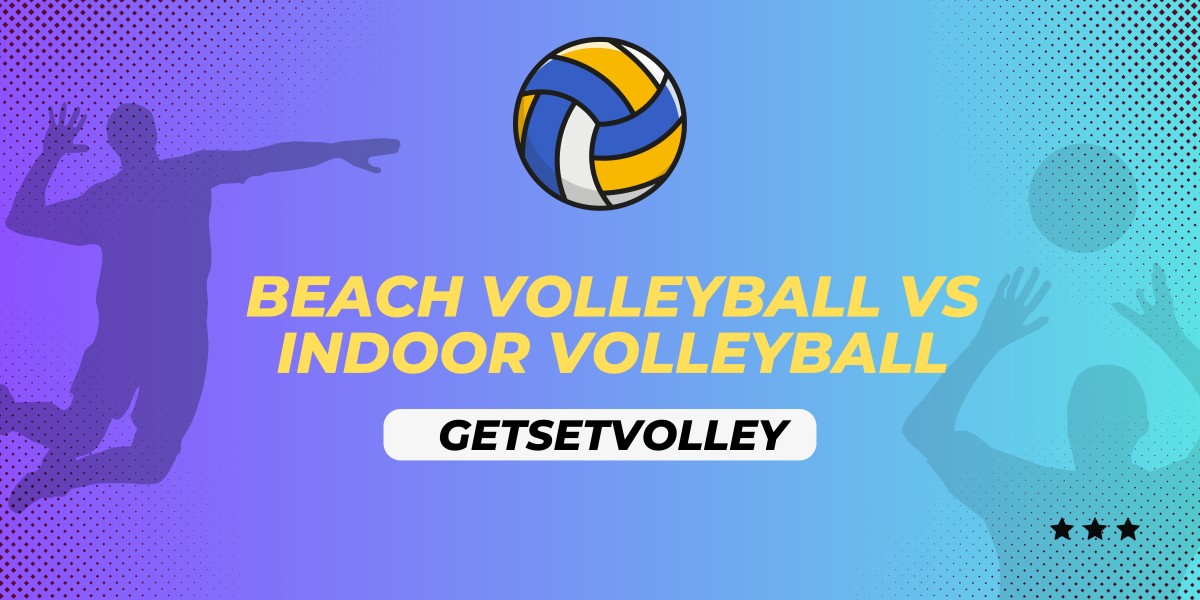Volleyball is a dynamic sport enjoyed worldwide, but its two main variations—beach volleyball and indoor volleyball—offer distinct experiences. While both games share fundamental rules and objectives, differences in playing surface, team size, ball characteristics, and strategy set them apart. Let’s explore these differences in depth.
1. Playing Environment
• Beach Volleyball: Played on sand courts, typically outdoors, which affects movement and gameplay. Weather conditions such as wind and sun can influence play.
• Indoor Volleyball: Played on a hard court inside a controlled environment, eliminating weather-related factors.
2. Team Size and Volleyball Positions
• Beach Volleyball: Teams consist of two players, requiring each athlete to be versatile in attacking, defending, and setting.
• Indoor Volleyball: Played with six players per team, each with specialized roles such as setter, libero, outside hitter, middle blocker, and opposite hitter.
3. Court Size and Boundaries
• Beach Volleyball: The court is 8m x 16m, slightly smaller than the indoor court, allowing for more movement and defensive play.
• Indoor Volleyball: The court is 9m x 18m, with more structured zones and a strict rotation system.
4. Ball Differences
• Beach Volleyball: Uses a slightly larger, lighter, and softer ball designed to withstand outdoor conditions and float better in the air.
• Indoor Volleyball: Uses a smaller, heavier ball for faster-paced play with higher impact.
5. Scoring System
• Beach Volleyball: Matches are played in a best-of-three format, with each set going up to 21 points (third set to 15), using the rally scoring system.
• Indoor Volleyball: Matches are played in a best-of-five format, with sets played to 25 points (fifth set to 15), also using rally scoring.
6. Player Movement and Strategy
• Beach Volleyball: Players must cover more ground, requiring agility and endurance. With only two volleyball players, strategic shots, such as dinks and cut shots, are crucial.
• Indoor Volleyball: Features quick plays, powerful spikes, and a complex rotation system where players switch positions during the game.
7. Blocking and Defense
• Beach Volleyball: Players signal blocking strategies using hand signals behind their backs since there are only two defenders.
• Indoor Volleyball: Defensive plays are highly coordinated, with designated blockers and diggers handling attacks.
8. Attire and Equipment
• Beach Volleyball: Players typically wear tank tops and shorts or swimsuits, with no shoes due to playing on sand.
• Indoor Volleyball: Players wear jerseys, knee pads, and specialized shoes for traction and support on hard courts.
________________________________________
Frequently Asked Questions (FAQs)
1. Which version of volleyball is more physically demanding?
Both versions require athleticism, but beach volleyball demands greater endurance and agility due to the sandy surface and smaller team size.
2. Can indoor volleyball players easily transition to beach volleyball?
Yes, but adjustments are needed. Beach volleyball requires more adaptability, stamina, and all-around skills compared to the specialized positions in indoor volleyball.
3. Why is the beach volleyball court smaller?
A smaller court balances the game, given that only two players cover the entire area.
4. How does weather impact beach volleyball?
Wind can affect ball trajectory, and sun glare can challenge visibility. Players must adjust their serves, passes, and attacks accordingly.
5. Do professional players compete in both formats?
Some athletes, like Kerri Walsh Jennings and Phil Dalhausser, have successfully transitioned between both versions, though most specialize in one.
6. Which version is more popular globally?
Indoor volleyball is more popular at professional and collegiate levels, while beach volleyball has a strong following, especially in coastal regions and during the Olympics.
7. What are the benefits of playing beach volleyball?
Beach volleyball enhances endurance, balance, and overall fitness due to the resistance of sand. It also fosters strategic thinking, as each player must handle multiple roles.
8. How does communication differ in each version?
Beach volleyball players rely on non-verbal signals and quick verbal cues due to wind interference. Indoor teams have more structured communication through designated leaders.
9. Is beach volleyball harder than indoor volleyball?
It depends on the player’s strengths. Beach volleyball requires more stamina and versatility, while indoor volleyball demands explosive power and teamwork.
10. Can beginners start with beach or indoor volleyball?
Beginners can start with either, but indoor volleyball may be easier due to the structured positions and stable court surface.
Conclusion
Both beach and indoor volleyball offer unique challenges and experiences. Whether you enjoy the strategic, high-energy pace of indoor volleyball or the endurance-driven, sun-soaked thrill of beach volleyball, each variation brings its own rewards. Choosing between the two depends on personal preference, environment, and athletic goals.



